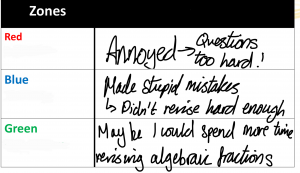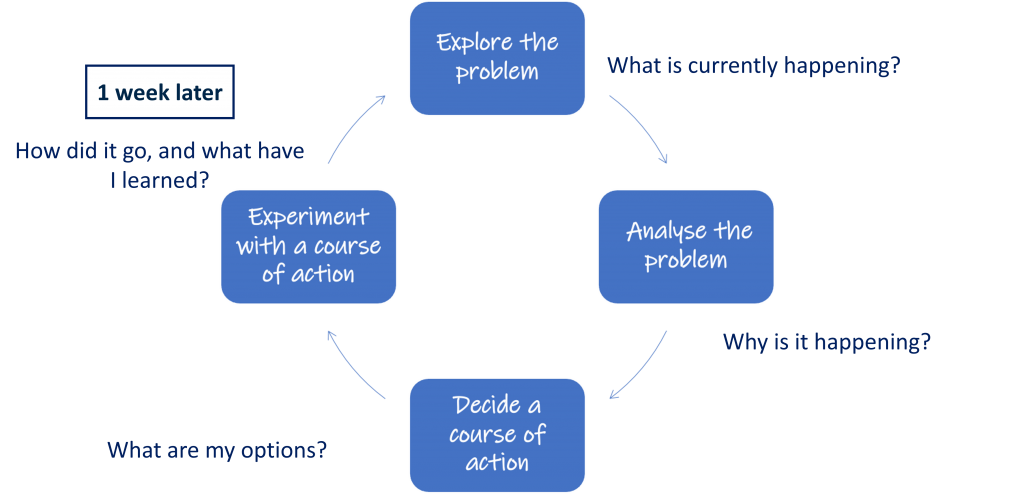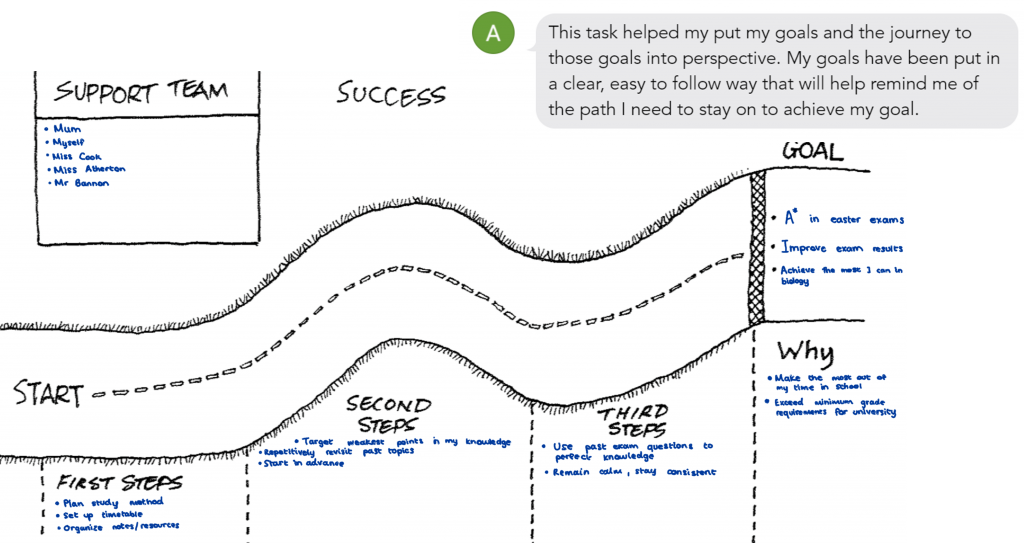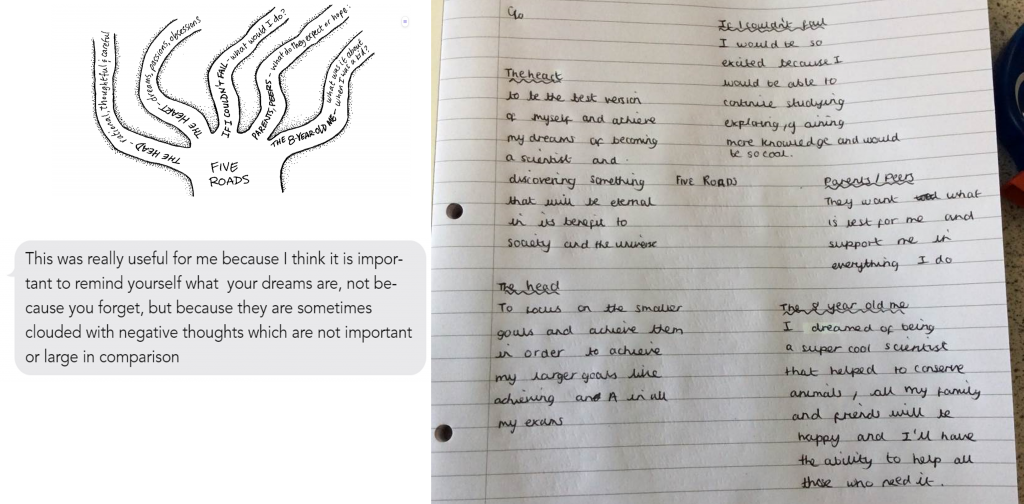Whilst metacognition is about monitoring and controlling our thought processes before, during and after a task, self-regulation, on the other hand, is about monitoring and controlling our emotions and behaviours before, during and after a task.
Benefits of promoting self-regulation:
- It allows pupils to develop into independent and proactive learners who are in control of their emotions and behaviours.
- It also improves motivation. This comes from the fact that pupils are equipped to monitor and manage their emotions
Self regulation is a skill just like any other we ask pupils to master during their education. Just like anything that is being learnt, self regulation is something we can teach and practice during our lessons. It is our job as teachers to model self regulation to pupils to help them master these skills.
Strategies to embed self regulated learning within lessons:
(Handout summarising all strategies – Self regulation handout)
1. Getting pupils to identify their emotional response
If pupils can identify their emotional responses to tasks and situations, this is an important first step in helping them to control them. Getting pupils to select emojis, colours, or adjectives to reflect how they are feeling can be an effective way to promote self-regulation in the classroom. Additionally, using ‘the zones of regulation’ – a cognitive-behavioural approach that teaches children to regulate their feeling, energy and sensory needs can help.
(Here are some examples of strategies in action – Emotional response)
2.What-Why-How
Another strategy to promote self regulation is the ‘What – Why – How’ method. Using these three simple questions can be a great way to ground pupils before, during or after a task and will help them identify and reflect on their emotions. They are easy for pupils to remember.

3.Managing emotions to feedback
A third strategy we can introduce to support pupils’ self regulation is to teach them to manage their reactions to feedback. For pupils in our classes often feedback is difficult or challenging, but for some they are pleased and excited.
Steve Bull, in his book The Game Plan, considered how to get people to respond to poor feedback effectively. He implied that building resilience to feedback can be achieved by working through 3 emotional and behavioural stages – the red, blue and green zone. In the red zone, pupils might experience shock, anger and denial. In the blue zone, they might begin to rationalise the feedback and see it from someone else’s perspective and, in the green zone, they will show acceptance and action. As educators we can use this model to ask pupils how they are feeling and to place themselves into one of the zones, then teach them strategies to support this.

4.Problem solving cycle
David Kolb’s problem solving cycle combines both self regulation and metacognition, as it encourages pupils to identify any problems with a process or approach, alongside their emotional responses.
In Stage 1 of the cycle, pupils should explore a problem by asking themselves ‘what is currently happening?’. In this stage, Kolb suggests that pupils should use facts, figures and evidence to describe the problem they are facing.
In Stage 2, pupils should then ask themselves why this problem is happening. They should be encouraged to make the list as long as possible, exploring themselves and their own actions, their attitudes and beliefs as well as the influence of those around them, work materials and the impact of external events
In Stage 3, pupils should decide a course of action by exploring their options. They should calmly set aside anything that is outside of their control, but instead list as many ideas and options as they can think of to address the issues raised in Stage 1 and 2.
Finally, in Stage 4 (which is likely to happen at least 1 week later to give the pupil time to action the problem), pupils should reflect on the method they have chosen and either discard it, modify it or continue with it.

5. The roadmap/5 roads
The roadmap is a tool used to help pupils set goals and work out how to achieve them. The idea is that pupils will identify a goal they’d like to achieve – this could be quite an ambitious goal, eg. Achieve an A* to get onto their chosen course at university, or it could be a smaller goal, eg. Achieve 10/10 on a piece of written homework. Pupils would then break down the steps and stages needed to achieve their goal. The roadmap acts as a nice visual reminder of their goals. They can keep revisiting this to increase their motivation.

Five roads is an alternative strategy where pupils are asked to split their thoughts between their head (metacognitive thoughts and processes) and their heart (emotions and behaviours).
